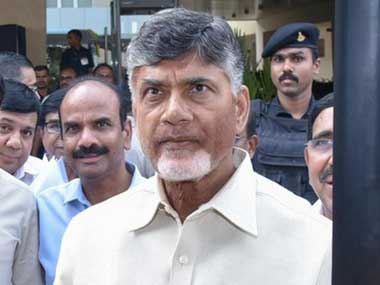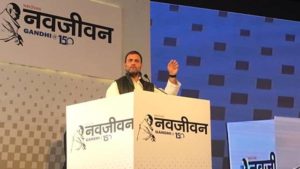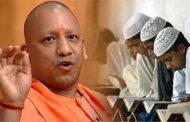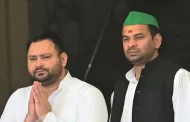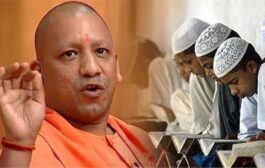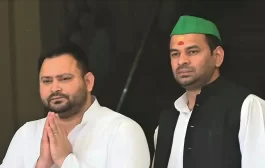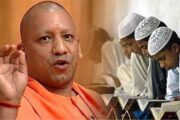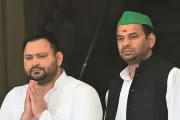Will it be the exit for BJP in Hindi heartland? Exit polls say so. There is no small amount of risk in taking exit polls seriously. Psephology is not an exact science. It deals with voter behaviour, voting patterns, statistical analyses of polls, number crunching, etc, and occupies the ambiguous space between science and politics. That’s why exit polls often generate more mirth than awe. Especially so in a country as diverse and complex as India.
And yet, for all its real and perceived inaccuracies, exit polls do point towards a certain trend as a collective. The trend should worry the BJP. For the first time since 2014, the Congress can look forward to the counting day with renewed optimism. Nearly all exit polls indicate that the grand old party will sweep to power in Rajasthan and remain locked in a photo-finish with the BJP in Madhya Pradesh and Chhattisgarh. All three states have a BJP government, and all three made major contributions during Narendra Modi’s resounding march to power in 2014.
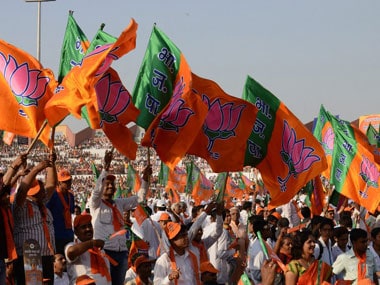
In Telangana, the exit polls, by and large, indicate that Telangana Rashtra Samithi (TRS) supremo K Chandrasekhar Rao will retain power while a hung Assembly is predicted in Mizoram.
In defending its turf, the BJP is aware that a setback in any of these states — basically a street fight with the Congress — would not only erode its national footprint but also feed into the narrative of anti-incumbency against Narendra Modi. In Chhattisgarh and Madhya Pradesh, in addition to the Congress, the saffron outfit is combatting 15-year voter fatigue that it hopes won’t translate into anti-incumbency. In Rajasthan, the party faces an uphill battle in retaining power where no incumbent has succeeded to do so in the last 20 years.
Barring one (conducted by Republic-Jan Ki Baat) all other surveys point to Vasundhara Raje’s exit. In the 200-seat Assembly where halfway mark is set at 101, Times Now-CNX has predicted 105 seats for the Congress and 85 for the incumbent BJP, while India Today-Axis reckons Congress will win anything between 119-141 seats and BJP will settle for a figure between 55 and 72. Republic-Jan ki Baat is the outlier, giving BJP 83-103 seats, the Congress 81-101 and others five seats.
In Madhya Pradesh, Times Now-CNX gives BJP a clear majority with 126 of the 230 seats in the fray where the majority mark is set at 116. However, India Today-Axis My India predicts BJP picking up between 102-120, the Congress claiming 104-122 seats and others settling for 4-11 seats. Republic-CVoter brings no joy for BJP either. The saffron unit is predicted to get between 90-106 seats while Congress around 110-126.
Finally, in Chhattisgarh, Times Now-CNX forecasts 46 seats for BJP (just achieving the majority mark) in the 90-seat House while Congress is slated to get 35. India Today-Axis, on the other hand, gives Congress between 55-60 and BJP a paltry 21-31 and eight for the JCC-BSP alliance indicating that Raman Singh’s tenure is over. However, the Republic-CVoter survey says BJP will get between 35-43 seats and Congress between 40-50. If that’s not confusing enough, News Nation expects BJP to get around 38- 42 and Congress 40- 44. Republic-CVoter has given the Congress 42-50 seats, BJP 35-43 and the BSP-JCC combine three to seven.
To cut a long story short, Madhya Pradesh and Chhattisgarh may go either way while Congress must get ready to choose between veteran Ashok Gehlot or young Turk Sachin Pilot as the chief minister. Even here there is no total consensus. Interestingly, economist Surjit Bhalla, who has an enviable track record in predicting exit poll results, has gone totally against conventional wisdom and has predicted that all three Hindi heartland states will stay with the BJP.
Two things are immediately clear from this rather elaborate (and pointless?) exercise. One, all surveys are busy hedging their bets, some with such a wide swing margin that prediction becomes meaningless. This is because pollsters are unsure of the result in hotly contested seats, which may be decided on the basis of local issues and caste/community considerations instead of an overriding factor.
That brings us to the second point. Unlike 2014, which has been touted as a Black Swan event in the history of Indian politics, India might be returning to “normalcy” in electoral practice where split verdicts will replace clear mandates. A few more hours are needed to verify this observation but if indeed that’s the case, the BJP will have a tougher battle awaiting it next year.
source: Firstpost.com

